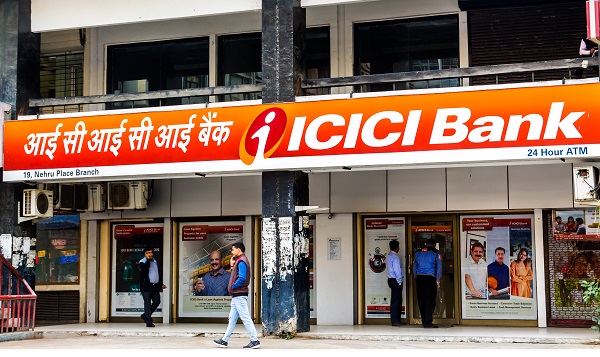.png)

Dr. Srinath Sridharan is a Corporate Advisor & Independent Director on Corporate Boards. He is the author of ‘Family and Dhanda’.
August 12, 2025 at 3:44 PM IST
Indian banking can no longer afford the pretence of free service. If it is to balance financial inclusion with the realities of profitability, it must confront uncomfortable truths: honest pricing, transparent policies, and governance that respects both shareholder returns and social mandates are no longer optional — they are survival essentials.
ICICI Bank’s recent decision to raise the minimum average balance for new savings accounts from ₹10,000 to ₹50,000 in metro and urban areas, with similar increases in smaller towns, is not a mere pricing tweak. It is a public admission of a shift that the industry has long acknowledged in private: the economics of running a traditional retail bank have changed irreversibly. By exempting existing customers and salary accounts, the bank has softened the immediate blow, but its intent is clear: to align its customer base with the economic realities of sustaining those relationships.
This will provoke outrage from those who see such moves as undermining financial inclusion. But sentiment does not change arithmetic. In a regulated environment where the Reserve Bank of India has repeatedly affirmed that banks may set their own thresholds, private institutions are simply making choices consistent with their commercial mandate.
Public sector banks must answer to government priorities, balancing them against profitability. Private banks must answer to shareholders, and cannot indefinitely carry loss-making relationships without undermining their long-term stability.
The regulatory framework afforded to banks has created a patchwork of disparate norms across institutions, leading to wide variation in thresholds and practices. Such divergence not only confuses consumers but also points to the need for greater harmonisation and clarity in regulatory expectations.
Cost Realities
The roots of today’s retail banking challenges can be traced back to the early 2000s, to the emergence of relationship banking in India. RBI’s decision to grant universal banking licences opened the door for private sector entrants to compete with entrenched public sector incumbents. One of the widely used “differentiation strategy” (oxymoron in itself) hinged on deploying relationship managers to cultivate sustained client engagement. The underlying intent was clear: to deepen customer loyalty and serve distinct market segments through bespoke financial solutions.
In practice, the promise of truly bespoke offerings never fully materialised. What was envisioned as tailored financial solutions often devolved into kitschy, formulaic “mass customisation,” no more personal than an off-the-rack shirt.
Over the next decade, the model was further eroded by operational and human capital challenges. The rapid expansion of relationship manager cadres, frequently staffed with unevenly trained recruits and plagued by attrition rates of 25-50% annually, compromised both continuity and quality of service.
The aggressive pursuit of corporate salary accounts brought a cascade of costly perks — free lifetime credit cards, airport lounge access, and preferential service tiers — that locked in customers but escalated operating costs.
Running a branch is far from a zero-cost exercise. Beyond rent and salaries lie electricity, security, technology, compliance, and audits. Digital banking strips out much of that overhead, often operating at less than half the cost of a physical branch, and is increasingly the first choice for younger customers who value speed and convenience over a familiar face behind the counter.
The truth is, the relationship banking model has not aged well. Public sector banks can sustain zero-balance accounts by cross-subsidising from other operations, and by leaning on government mandate and absorbing lower profits. Private banks have no such cushion.
In 2023-24 alone, eleven public sector banks collected ₹23.31 billion in penalties for non-maintenance of minimum balances, which is a 25% jump from the previous year. Punjab National Bank led with ₹6.33 billion, followed by Bank of Baroda at ₹3.86 billion and Indian Bank at ₹3.69 billion. Over three years, these penalties have brought in more than ₹56 billion.
This is not a nudge for banks to abandon the mandate of social inclusion. In fact, every serious institution should be prepared to run zero-balance accounts as part of its social responsibility. But for listed, profit-driven banks, this cannot be the business model. Even if the Government of India was the majority shareholder, it is not their sole owner. That is the essence of corporate governance: acknowledging the obligations to all shareholders, not only to the state or to policy imperatives.
Enduring Fundamentals
For all the changes in technology, banking has not changed much since the Medici family turned it into a formal craft during the Renaissance: take public deposits, lend them, cover the cost of operations, and earn a profit from the spread between interest paid and earned. What has changed is the world around it — yet many Indian banks still cling to narrow product portfolios and overreliance on interest margins, showing limited appetite for innovation. The tension today lies in balancing that traditional backbone with the shifting expectations of customers who want both value and transparency.
Customers are right to expect that fees come with visible value, and that the fine print matches the promise. Too often, ‘privilege’, ‘imperial’, ‘royal’, ‘affinity’, or ‘platinum’ tiers conceal unremarkable service. The RBI, banks, and consumers need to confront facts together: innovation must be genuine, practices transparent, and shareholder expectations reconciled with the non-negotiable goal of financial inclusion.
The ICICI Bank move will not be the last. It is the marker that the free-lunch era in Indian banking is ending, and that sustainable service requires banks, regulators, and customers to recognise the true price of keeping the doors open.




